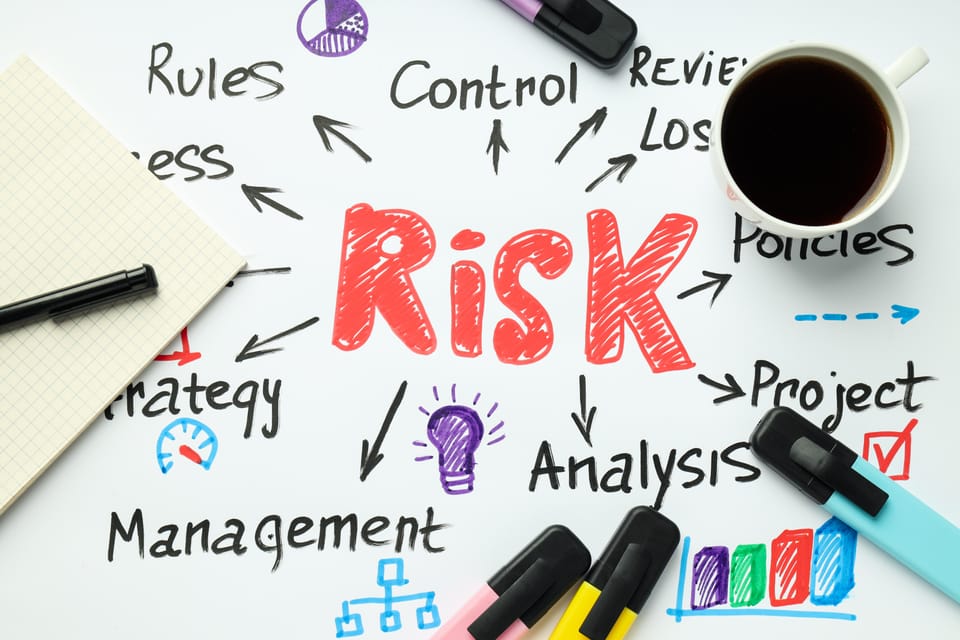"Life is a series of calculated risks - nothing more." - Haruki Murakami
Imagine yourself standing at the edge of a huge ocean, ready to set out on a voyage into uncharted territory. There are exciting adventures and discoveries to be made, but there are also strong waves and erratic winds in store. Life and business are full of uncertainties, where every choice is a leap into the unknown, much like this metaphorical journey. This is where risk management skills come into play, guiding us through the turbulent waters of uncertainty like a compass in a tempest.
The word "risk" frequently brings up feelings of caution. However, risk can also be a sign of opportunity as well as a warning of an oncoming danger. Risk is a necessary component of progress, whether one is pursuing personal or professional goals. How we deal with it, lessen its effects, and take advantage of it is what matters most. This is where risk management's strategic discipline comes into its own.
What is it?
At its core, risk management is the process of identifying, assessing, and prioritising risks in order to implement strategies aimed at minimising or managing them. It is more important to embrace risk wisely while taking precautions against possible hazards than it is to completely avoid it.
Fundamentally, risk management is an organised procedure that includes:
- Identification of risks: The first stage is to pinpoint any potential dangers that could have an impact on your business. This process includes looking at both external and internal factors, including financial, regulatory, operational, and strategic risks.
- Risk assessment: After a risk has been identified, it must be assessed for likelihood and potential impact. This aids in risk prioritisation and resource allocation.
- Creating strategies: A mitigation strategy needs to be created for every risk that has been identified. This could entail accepting the risk and putting backup plans in place, transferring the risk to a third party, minimising the likelihood of the risk, or avoiding the risk altogether.
- Observing and evaluating: Risk management is a continuous procedure rather than a one-time occurrence. Maintaining an effective strategy and keeping it in line with your organisation's changing needs requires routinely monitoring and reviewing risks.
Types of Risks
In the world of finance and business, risks can take many different forms:
- Market risks: It includes changes in interest rates, commodities prices, currencies, and markets.
- Operational risks: Internal hazards resulting from systems, procedures, or mistakes made by people.
- Reputational risks: harm to one's reputation brought on by unfavourable circumstances or unfavourable public opinion.
- Compliance Risks: It is related to adhering to regulations and fulfilling legal obligations.
- Strategic Risks: It is associated with shifting industry trends, rivalry, or technical breakthroughs.
Effective Risk Management
An organisation's entire culture must change for risk management to be effective; it is more than just a collection of guidelines or checklists. Encouraging a common understanding of the significance of risk management and its role in accomplishing organisational goals requires support from all levels, from frontline staff to upper management.
In order to foster a culture of risk awareness, organisations ought to:
- Integrate risk management into their mission statement and guiding principles.
- Give thorough instruction and training on the concepts and procedures of risk management.
- Promote candid dialogue and teamwork when identifying and managing hazards.
- Clearly define who is responsible for what when it comes to risk management.
- Give praise and recognition to staff members who show a strong commitment to risk management.
Importance of Risk Management
Efficient risk management fosters innovation and growth in addition to providing protection against unforeseen events. Individuals and organisations can be done by being aware of and in control of risks in the following ways:
- Seize the Chance: Innovation and growth are frequently facilitated by risks.
- Make sure You're Resilient: Get ready to face unforeseen circumstances head-on.
- Boost Your Ability to Make Decisions: With a better grasp of the possible outcomes, make well-informed decisions.
- Develop Credibility and Trust: Show that you take a proactive approach to risk management to gain credibility.
Conclusion
Learning the art of risk management is like learning to navigate through a storm in a world where change is constant and uncertainties are everywhere. It's about finding a middle ground between bravery and caution, progress and prudence. Taking calculated risks and managing them well is not only a skill, but a necessary tool for achieving longevity and success.
Recall that risk management in the broad voyage of life and business isn't about dodging storms; rather, it's about mastering them and using their power to steer toward more promising destinations.





